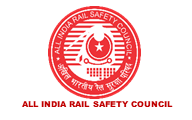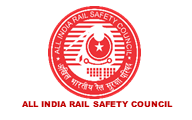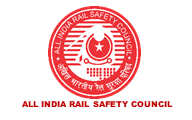
Tips and guidelines for parents and
students about internet safety.

The Internet has opened up a virtual
world of information for anyone with a computer and an on-line connection.
Children not only learn about computers, but are able to access more
information from more sources more quickly than from any other medium. With a
little bit of planning and appropriate adult supervision, children can explore
and learn while minimizing, or eliminating the dangers of being abused or
exploited.
Internet Safety Tips for Parents
Establish
rules for Internet use:
·
What
sites can your child visit?
·
Who
can they talk to?
·
How
long will they be on line?
·
Where
can they use a computer?
Keep
computers in a common room:
·
Parent
and guardian supervision can be an effective method of protecting children
online
Stay
informed:
·
Learn
everything you can about the internet
·
Take
an interest in learning what sites your kids visit
·
Learn
some of the common language used in chatrooms
Research
Parental Controls:
·
Learn
about the available blocking, filtering, and parental controls for your
computer and internet and when to use them
·
Internet
Safety Tips for Students
Tell your parents when you are going
online and talk to them about what you're doing online. If someone you don't
know tries to arrange a meeting with you, immediately notify your parent or
guardian.
Don't
give out personal information, including:
·
Name
·
Age
·
Address
and telephone number
·
Parent/guardian's
name
·
School
name
·
Passwords
or other login information used online
Be
careful when uploading photos:
·
Personal
photos should not have revealing information, such as school names or locations
·
Look
at the backgrounds of the pictures to make sure you are not giving out any
identifying information without realizing it
·
The
name of a mall, the license plate of your car, signs, or the name of your
sports team on your jersey or clothing all contain information that can be used
to determine your location
Make
use of privacy settings on social networking sites:
·
Set
it so that people can only be added as your friend if you approve it
·
Set
it so that people can only view your profile if you have approved them as a
friend
Don't
post personal information about friends:
·
Remember
that posting information about your friends could put them at risk
Document
Internet Safety Tips for Primary Students
•
Do not reply to rude or nasty comments.
• Immediately tell an adult if you feel uncomfortable or worried online.
• If someone is being mean or nasty on MSN – block them.
• Have your computer in a common area of the house NOT IN THE BEDROOM!
• Do not have a ‘flirty’ or ‘nasty’ log on name.
• Help your parents to learn about the internet. Teach your parents the
language of the cyberspace.
• Let your parents know where you go online, just as you would in real life.
• Ask your parents to spend time online with you - learn and explore together
• Make sure that there are filters and other monitoring/blocking software to
minimise dangers.
• Together with mum or dad, set house rules about what information you can put
onto websites or share with others.
• Never ever share PERSONAL INFORMATION such as your name, address, phone
number or school!
• Social Networking profiles such as MySpace, Facebook and Bebo MUST BE SET TO
PRIVATE.
• MSN contacts and social networking site friends should be people that you
know in real life. This is one way to reduce possible risks.
• An ‘online friend’ that you don’t know in real life is a STRANGER.
• Passwords MUST NOT BE SHARED!!!!! Choose passwords that others can’t
guess…..not your fav food or pets name.
• Change passwords 4 times per year (last day of every term)
• Be aware that information on the internet is not always reliable.
• Your parents should check your hotmail/msn/social networking lists.
• If you are playing games online, YOUR parents should know how to play the
game too in case of problems. Play online games together.
• Learn about search engines and how they work.
• The internet and the various applications are a lot of fun ……surf safely
together with your parents!
Please
note that this list is by no means exhaustive and that there is no guarantee
that adherence to these tips will provide 100% protection or safety for those
using the various applications of the internet.
Internet Safety Tips for
Secondary Students
• Make sure there is no response to
rude or harassing emails.
(keep a record in case of further investigation)
• Immediately exit any site that makes you feel uncomfortable or worried.
• If harassment continues….your current email account can be deleted and a new
one started. Your new email address should only be given to a selected few.
• If receiving harassing messages on MSN - have the sender blocked.
• PC’s SHOULD be in a common area of the house NOT IN THE BEDROOM!
• Your parents should walk past regularly.
• Do not have a ‘suggestive’ or ‘flirty’ log on name.
• NEVER allow explicit photos of yourself to be taken in ANY circumstance
• If you have found inappropriate content about yourself on a website or are
informed about
this situation please contact the
ISP and or Police or tell your parents to do so a.s.a.p.
• Help your parents to learn about the internet - share your knowledge of the
internet with your parents in a fun environment. If they have some knowledge
they will be less likely to be suspicious about ‘socialising online’.
• Let your parents know where you go online, just as you would in real life.
• Ask your parents to spend time online with you - learn and explore together
• Make sure your computer has a good filter and other monitoring/blocking
software to minimise dangers.
• Make sure you are on safe and suitable sites. Filters CAN sometimes fail to protect.
• There should be house rules about what information you can put onto websites
or share with others.
• Remember that the internet is PERMANENT….be mindful of what you post and how
you portray yourself. Pics etc can remain FOREVER
• Teach your parents the language of the cyberspace.
• ABSOLUTELY NO EXCHANGE OF PERSONAL INFORMATION!
• Social Networking profiles such as Facebook etc SHOULD BE SET TO PRIVATE.
• MSN contacts and social networking site friends should be people that you
know in real life. This is one way to reduce possible risks.
• An ‘online friend’ that you don’t know in real life is a STRANGER.
• Passwords MUST NOT BE SHARED!!!!! Choose passwords that others can’t
guess…..not your fav food or pets name. Should be a mix of caps/letters/numbers/symbols.
• Change passwords 4 times per year (last day of every term)
• Be aware that information on the internet is not always reliable.
• Very close supervision for young children is recommended. There should be a
limit to the email correspondence/msn list to be a list of friends and family
that has been approved.
• If you are playing games online, YOUR parents should know how to play the
game too in case of problems. Play online games together.
• Misuse of the internet and associated technology (bullying/harassing someone)
is a crime.…don’t break the law and risk getting a criminal record.
• Learn how search engines work. The first website returned may not be the
best.
• The internet and the various applications are a lot of fun and a wonderful
tool……maximize the benefits and surf safely together!
Please
note that this list is by no means exhaustive and that there is no guarantee
that adherence to these tips will provide 100% protection or safety for those
using the various applications of the internet.
“Parents must learn about the
internet with their child.”
Kids
today have access to and are accessible by many millions of people worldwide
via the vast array of
websites, applications and online-games. The unprecedented amount of personal information
available on
these sites makes them a perfect place for people who would happily identify
their victims and gain their trust.
Other identified dangers include exposure to inappropriate content, cyber
bullying and harassment, exchange
of inappropriate images and identity theft. Teens are often not aware that
their words and or photos, which may
have been intended for a small audience, sometimes find their way to a larger
one, often with both the
unexpected and undesirable consequences.
Today’s parents grew up in a world devoid of these technologies. They often
have little knowledge on how best
to assist and guide them and when interest or concern is shown, suspicious kids
‘fob’ them off with the typica
responses of ‘You won’t understand.....’ ‘Go away its private......’or ‘You
have no idea.....’
Don ’t be afraid of technology. Learn about it and embrace it
as your children do.
Accept that they will access content that might
upset them, often not because they went looking for it and make
sure that they are comfortable coming to you
when this happens. Spend time online with them. Cyberspace can
be a lot of fun.
“Learn
about search engines and how they work.”
Internet and mobile phone
technology is fabulous and provides us with the ability to connect with people
all
around the world. We can explore and learn
about the world like never before, however, cyberspace does have
its problems, and unfortunately for kids, they
are the primary targets for people’s warped ideas and bad
behaviours. Young people are often targeted and
groomed without the ability to recognise that this is occurring.
Kids’ technical skills are superb. Adults today
cannot even aspire to the level of technology knowledge inherent
in today’s kids, but we do know that this skill
is not matched by cogitative development. Nothing we do can ‘put
an old head on young shoulders’ and the ability
to perceive risk, and foresee consequences is limited.
Kids need to appreciate and accept that just as
in the real world, there are dangers in cyberspace. Remember
that cyberspace is permanent. Everything that
you write, post and send can be traced and will remain there
forever. Do you want that comment, or pic from
Saturday night’s party on the desk of the person conducting a job
interview in 10 years time?
Are you happy for that naked pic, you sent
trustingly to your boyfriend who loves you
dearly and will not share it with anyone (until
he has it or you break up or both) on the computer of a
paedophile? Kids need to think before they click
and parents and teachers need to educate them to ensure that
where possible, the correct decisions are made
in the first instance, not after a moment of madness.
“each children that information on
the web is not always reliable.”
With
the explosion of cyber technology, the issues of cyber bullying and
‘sexting’, are emerging as the number
one issue confronting the safety and wellbeing of young people and the wider
community. Together with
associated technology including 3G mobile telephones, Instant Messaging(MSN),
online games and the
popularity of social networking sites such as MySpace, Facebook & now
Twitter, today’s youth have access to
and are accessible by many millions of people worldwide.
Previously schools did not become involved in things that occurred ‘out of
hours.’ It was not their business or
concern, however with cyber bullying, harassment and sexting, where the parties
involved are often from within
the same school or neighbouring schools, the problem is firmly thrust into the
hands of the school
accompanied by the often unrealistic expectations from parents, that they
‘solve’ the problem.
When bullying occurs online, regardless of where it actually took palace, and
the fallout is obvious to school
staff, it does become a school issue. Likewise, many secondary schools have to
deal with the issue of naked
pictures of students being spread throughout the school community. Schools must
embrace technology for the
wonderful tool that it is, not dwell on the problem that it might become. Be
proactive in all areas, educate your
whole community, students parents and staff and make sure that your policy
documents are relevant, circulated
to all members of the school community and are regularly updated. Students must
be encouraged to come
forward and report problems and breaches of policy must be dealt with
sensitively and efficiently.










